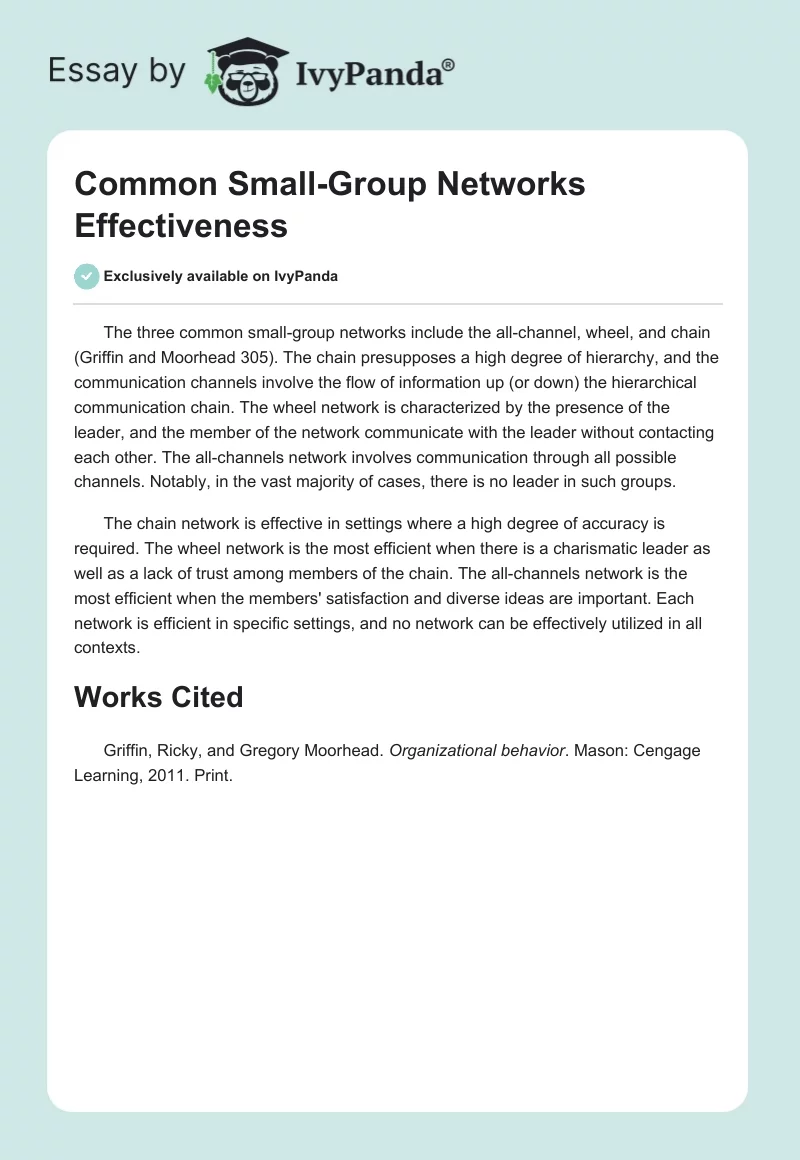The three common small-group networks include the all-channel, wheel, and chain (Griffin and Moorhead 305). The chain presupposes a high degree of hierarchy, and the communication channels involve the flow of information up (or down) the hierarchical communication chain. The wheel network is characterized by the presence of the leader, and the member of the network communicate with the leader without contacting each other. The all-channels network involves communication through all possible channels. Notably, in the vast majority of cases, there is no leader in such groups.
The chain network is effective in settings where a high degree of accuracy is required. The wheel network is the most efficient when there is a charismatic leader as well as a lack of trust among members of the chain. The all-channels network is the most efficient when the members’ satisfaction and diverse ideas are important. Each network is efficient in specific settings, and no network can be effectively utilized in all contexts.
Works Cited
Griffin, Ricky, and Gregory Moorhead. Organizational behavior. Mason: Cengage Learning, 2011. Print.

